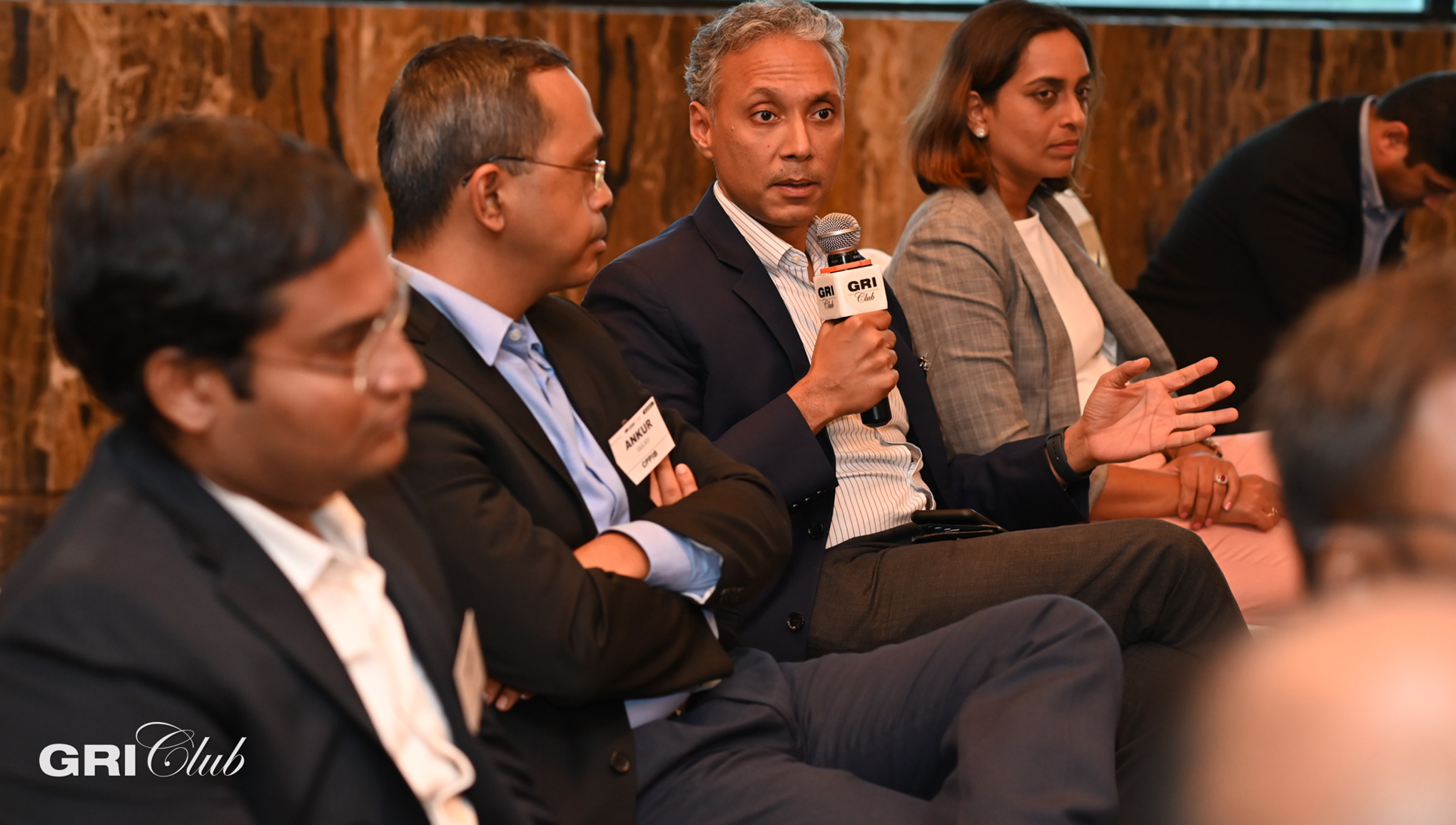 Credit: GRI Club
Credit: GRI ClubNew Paradigm of Residential Project Financing
What can we learn from the last cycle?
September 8, 2022Real Estate
Since the introduction of FDI in real estate in 2005, there have been a few distinct cycles in residential real estate investing in India. Investment structures and strategies have also evolved manifold, right from the days of equity investments to structured equity, investment via debt structures, to Non-Bank Financial Companies (NBFC) funding. In such a context, GRI Club gathered senior real estate players with AUM and capital at risk in India for a brain-storming Club Meeting on Residential Project Financing.
Read below the Club Meeting's summary containing the main topics discussed.


a. Deployment pressure on NBFCs led to less rigorous underwriting standards.
b. Aggressive assumptions on sales velocity and price appreciation that did not materialise. c. Increased supply from developers which did not necessarily translate into absorption resulting in debt pile-up.
d. Mismatch between project cashflow and debt against the same. Security cover is less relevant than cash flow.
As we move into the new paradigm of real estate financing, investors need to be cognisant of the above lessons and be more vigilant.
RERA has improved the transparency and accountability in the sector which would augur well for the industry overall. IBC has been introduced with the right intent to ensure speedy redressal of stressed situations. However, execution hurdles and inordinate delays have resulted in far fewer resolutions than was initially envisaged.
Changes in the regulatory regime for the NBFCs have diminished their role as a key player in the real estate financing landscape.
There is also a change in the investor landscape as Alternative Investment Funds (AIFs) move in to enter the space vacated by NBFCs. AIFs are likely to be the preferred source of funding at early stage financing. With the real estate sales continuing to be good, there is strong demand for early stage financing from high quality boutique developers. While the cost of capital for early stage financing will continue to remain high, it is still viable for developers with strong execution. Consequently, AIFs will play a more active role in the new cycle especially in early stage financing.
Equity capital is likely to remain limited for the sector as the risk-return metrics are yet to be favourable for equity providers. Equity funding in the sector will be through partnerships / platforms with Tier I developers or developer led AIFs with funds being used for captive projects.
- Article credits: SILA.

About GRI Club
Read below the Club Meeting's summary containing the main topics discussed.
Designed to foster deal flow and engage with peers, the session was held on 30th August 2022, at The St. Regis, Mumbai. It was hosted by SILA and co-moderated by Sahil Vora, Founder & Managing Director, SILA, and Kunaal Shah, Partner, Trilegal.
The meeting was attended by several club members across the Indian residential real estate industry.
The meeting was attended by several club members across the Indian residential real estate industry.


Section I – Learnings from Last Cycle
The last cycle was driven by NBFCs which were driven by market conditions of abundant liquidity and premium capital market valuations. The liquidity crunch post the IL&FS crisis resulted in a steep fall of NBFC funding, thereby impeding capital availability to developers. In hind-sight it is fair to say that there have been more losers than winners in the last cycle. In terms of key learnings from the last cycle:a. Deployment pressure on NBFCs led to less rigorous underwriting standards.
b. Aggressive assumptions on sales velocity and price appreciation that did not materialise. c. Increased supply from developers which did not necessarily translate into absorption resulting in debt pile-up.
d. Mismatch between project cashflow and debt against the same. Security cover is less relevant than cash flow.
As we move into the new paradigm of real estate financing, investors need to be cognisant of the above lessons and be more vigilant.
Section II – Changes in the Regulatory Landscape
One of the salient feature of the previous investment cycle has been the flurry of regulatory changes, most of which continue to have an impact on the sector. Demonetisation, introduction of Goods and Service Tax (GST), Real Estate Regulatory Authority Act (RERA), Insolvency Banking Code (IBC) and increased regulatory oversight on NBFCs are some of the key changes.RERA has improved the transparency and accountability in the sector which would augur well for the industry overall. IBC has been introduced with the right intent to ensure speedy redressal of stressed situations. However, execution hurdles and inordinate delays have resulted in far fewer resolutions than was initially envisaged.
Changes in the regulatory regime for the NBFCs have diminished their role as a key player in the real estate financing landscape.
Section III – Deal flow - where the opportunities lie and the capital structures
A key feature of the new cycle is the consolidation both in the developer space and the NBFC space. The changing regulatory landscape and tightening of capital availability has strongly benefited the Tier-I developers in each city, both from a growing market share and reduction in cost of capital. While the consolidation in developers will continue, there is still a large addressable market for smaller boutique developers with strong governance, capital allocation and delivery capabilities. This set of developers have strong brand equity in their preferred micro markets and will continue to thrive.There is also a change in the investor landscape as Alternative Investment Funds (AIFs) move in to enter the space vacated by NBFCs. AIFs are likely to be the preferred source of funding at early stage financing. With the real estate sales continuing to be good, there is strong demand for early stage financing from high quality boutique developers. While the cost of capital for early stage financing will continue to remain high, it is still viable for developers with strong execution. Consequently, AIFs will play a more active role in the new cycle especially in early stage financing.
Equity capital is likely to remain limited for the sector as the risk-return metrics are yet to be favourable for equity providers. Equity funding in the sector will be through partnerships / platforms with Tier I developers or developer led AIFs with funds being used for captive projects.
Section IV - Focus on Asset Management and recovery
From the last vintage, the most valuable learning is that post investment asset monitoring is key. Many investors have increased their focus on post investment asset monitoring and recovery. Focus on asset management will be a key factor for better investment returns in this cycle. More intrusive asset monitoring is likely to remain a standard practice for investments in the new vintage.- Article credits: SILA.

About GRI Club



